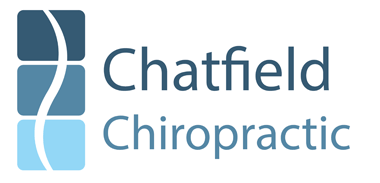
Shockwave Therapy for Rotator Cuff Tendinitis Relief
 If you’re struggling with persistent shoulder pain, you may have heard about shockwave therapy for rotator cuff tendinitis. This non-invasive treatment is gaining popularity in chiropractic clinics for its ability to promote tendon healing, reduce pain, and support long-term recovery—especially when conventional therapies fall short.
If you’re struggling with persistent shoulder pain, you may have heard about shockwave therapy for rotator cuff tendinitis. This non-invasive treatment is gaining popularity in chiropractic clinics for its ability to promote tendon healing, reduce pain, and support long-term recovery—especially when conventional therapies fall short.
Rotator cuff tendinitis is one of the most common causes of shoulder pain, and many patients seek alternatives to surgery or long-term medication. Recent research supports extracorporeal shock wave therapy (ESWT) as an effective part of a rotator cuff tendinitis treatment chiropractic plan. Here’s what you need to know.
How Shockwave Therapy Works
Shockwave therapy uses focused mechanical sound waves (not electrical shocks) applied directly to the affected tendon area. These waves stimulate biological processes that:
- Promote blood flow
- Reduce inflammation
- Accelerate tissue repair
- Decrease pain signal transmission
In simple terms, ESWT jumpstarts the body’s natural healing response in the shoulder’s soft tissues. This makes it especially useful for non-surgical treatment for rotator cuff injury, particularly in chronic or treatment-resistant cases.
Benefits of Shockwave Therapy: What the Evidence Shows
Several high-quality studies and systematic reviews published in recent years support the benefits of shockwave therapy for rotator cuff tendinitis:
- Improved shoulder function was reported at 3- and 6-month follow-ups in patients treated with ESWT, particularly when combined with rehabilitation exercises
- Significant pain reduction was observed across multiple studies, as measured by VAS (Visual Analogue Scale) scores, with improvements in sleep quality and daily activity.
- Enhanced range of motion in external rotation was noted, although gains in abduction were more variable.
- Tendon healing effects are supported by biological data showing stimulated cellular repair and reduced degenerative changes in treated tendons.[1][4]
Additionally, both low-energy and high-energy ESWT protocols have shown benefit, with high-energy shockwave therapy often providing faster or more pronounced relief. The treatment is also effective for both calcific and non-calcific tendinitis, expanding its applicability.
Shockwave Therapy for Shoulder Pain in Chiropractic
Chiropractors often integrate shockwave therapy into a broader rehabilitation plan. A typical shockwave therapy for shoulder pain program includes:
- A series of ESWT sessions (usually 3–6), spaced one week apart
- Progressive exercises to restore strength and mobility in the rotator cuff muscles
- Education on posture, ergonomics, and activity modification
- Monitoring of progress and response to ensure safe and effective recovery
This multimodal strategy allows patients to benefit from immediate pain relief while building long-term stability and function through active rehabilitation.
Who Should Consider Shockwave Therapy?
You might benefit from ESWT if you:
- Have had shoulder pain for over 3 months with minimal improvement
- Have been diagnosed with rotator cuff tendinitis or tendinopathy
- Want to avoid surgery or reduce reliance on medications
- Are committed to an active chiropractic program
It’s important to consult with a trained chiropractor to determine whether you’re a suitable candidate. Some conditions, such as complete tendon tears or acute inflammation, may require other interventions.
Addressing Common Misconceptions
Let’s clear up a few points of confusion:
- ESWT is not a quick fix: While many patients feel improvement within a few sessions, results are best when paired with targeted exercises and consistent care.
- It’s not just for calcific tendinitis: Research supports its use for both calcific and non-calcific rotator cuff tendinitis.
- It’s generally safe: Adverse effects are rare and typically mild (e.g., temporary soreness or redness at the treatment site). Still, patient screening and professional application are essential.
What to Expect During Treatment
A typical ESWT session is quick and non-invasive:
- Your chiropractor identifies the affected area of the tendon.
- A handheld shockwave device is applied using gel as a medium.
- Pulses are delivered for 5–10 minutes, often without the need for anaesthesia.
- You may feel mild discomfort during treatment but no lasting pain.
Most patients require a short series of treatments spaced over several weeks.
Shockwave Therapy: A Valuable Tool in Rotator Cuff Rehabilitation
Rotator cuff tendinitis can severely limit your ability to work, sleep, or participate in daily life. Thankfully, shockwave therapy offers a non-surgical treatment for rotator cuff injury that is both evidence-backed and accessible in modern chiropractic settings.
When combined with an active rehabilitation plan—including strengthening, stretching, and movement retraining—ESWT can help accelerate recovery and reduce the chances of chronic dysfunction.
Take the First Step Toward Shoulder Relief
If you’re dealing with ongoing shoulder pain and traditional treatments haven’t worked, shockwave therapy for rotator cuff tendinitis may be the solution you’ve been searching for.
📞 Contact Chatfield Chiropractic today to schedule a consultation and learn how a personalized shockwave therapy plan can support your recovery.
